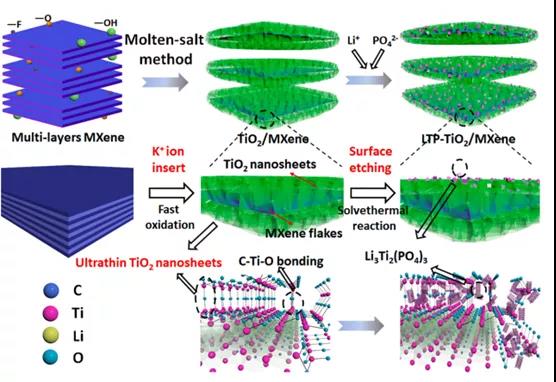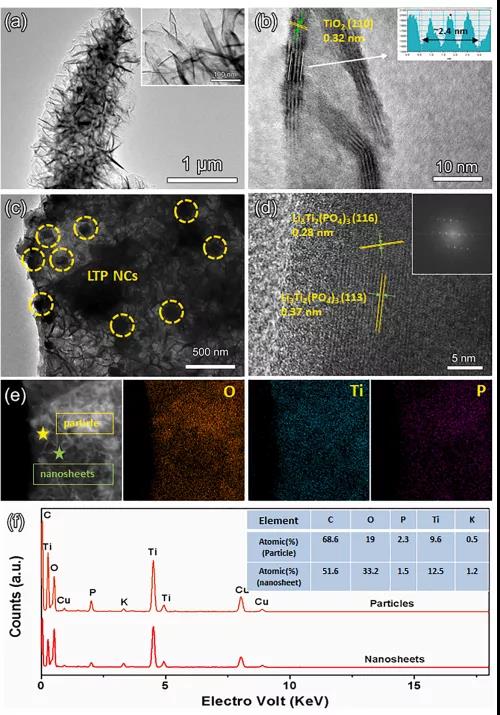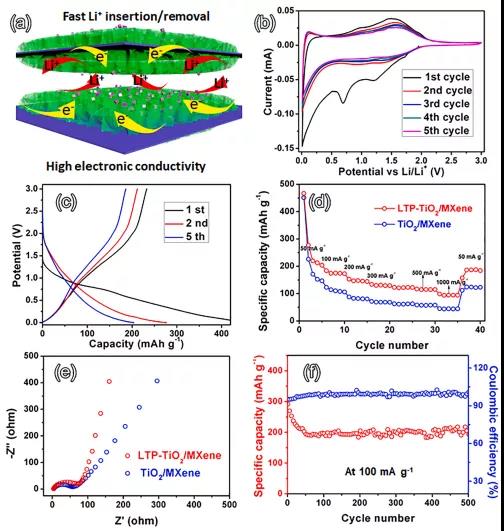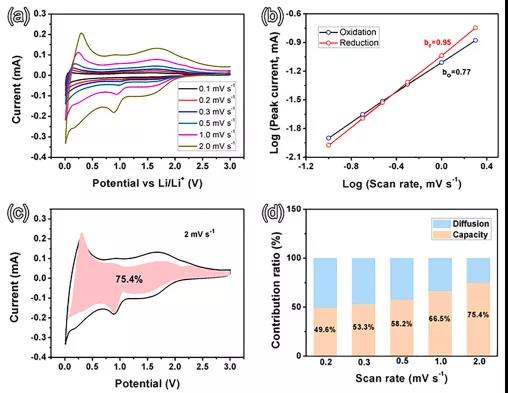CEJ: MXene - based LTP porous 2D/2D composite structure for high performance lithium ion batteries
QQ Academic Group: 1092348845
Detailed


In the past few decades, rechargeable batteries such as lithium ion batteries have been extensively and deeply studied due to their high energy density and wide operating voltage range. With increasing demand, improvements in energy density, cycle life, and battery safety are needed. The next generation of advanced lithium-ion batteries is already making some headway. More attention should be paid to electrode technology and the development of high-performance electrode materials with enhanced ion/electron transport capability.
Two-dimensional materials, usually defined as a class of materials with several atomic layer thickness and high transverse/longitudinal ratio, are considered as a class of ideal electrode materials due to their large area-volume ratio. MXenes, as a new type of 2D metal carbides or carbides, has attracted wide attention in the field of electrochemical energy storage due to its metal conductivity and rich surface chemistry. MXene, as a negative electrode material of lithium, has a high lithium intercalation potential, and a larger layer spacing (~1nm) can ensure the rapid insertion of Li+, thus improving the multiplier performance. However, MXenes itself has some inherent drawbacks, such as lower capacity. The typical TWO-DIMENSIONAL material is a vertically stacked "face to face" structure because of the intense van der Waals forces that exist between the layers, which are not conducive to rapid charging.

Recently, Professor Shaochun Tang of Nanjing University and Professor Junwu Zhu of Nanjing University of Science and Technology jointly published the title in Chemical Engineering Journal,


FIG. 1. Synthesis of LTP-tio2 /MXene nanocomposites.

Figure 2. SEM images of 2D-2D LTP-tio2 /MXene nanostructures.

Figure 3. TEM and HRTEM images of 2D-2D LTP-tio2 /MXene nanostructures.

Figure 4. XRD and XPS characterization of the nanostructures of MXene, TiO2/MXene and LTP-tio2 /MXene.

Fig.5 Mechanism of porous 2D/2D LTP-tio2 /MXene promoting lithium storage performance and electrochemical performance test.

FIG. 6 CV image and kinetic performance analysis of LTP-tio2 /MXene nanocomposites.

In this paper, a novel strategy was adopted to successfully prepare a new type of layered porous and stable 2D/2D composite structure, including thin Ti3C2 tablets and many vertically intersecting TiO2 nanometer tablets. Finally, dispersed Li3Ti2(PO4) was formed by effectively melting salt method. This ltP-tio2 /MXene, as the negative electrode of lithium, can store lithium capacity up to 204 mAh G-1 under the current density of 50 mA g-1, and has a high multiplier performance. The good performance is mainly due to the high surface capacitance contribution of its unique 2D/2D composite structure. At the same time, the outstanding stability of the composite comes from the fact that the stable composite structure can mitigate the volume loss caused by volume changes. This work provides a new idea for the design of 2D/2D composite structural materials.
Literature link:
https://doi.org/10.1016/j.cej.2020.127049
Source: MXene Frontie
This information is from the Internet for academic exchange only. If there is any infringement, please contact us to delete it immediately
- Previous: ICF: Cobalt-modified M
- Next: MXene breakthrough: Na


 mxene academic
mxene academic
